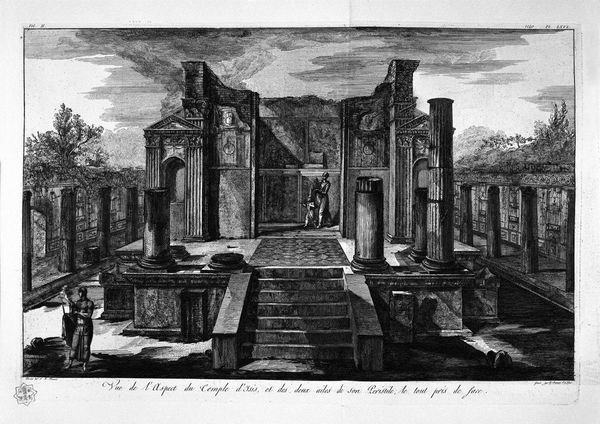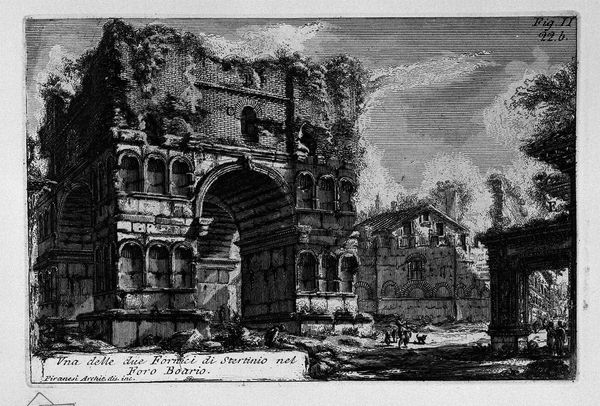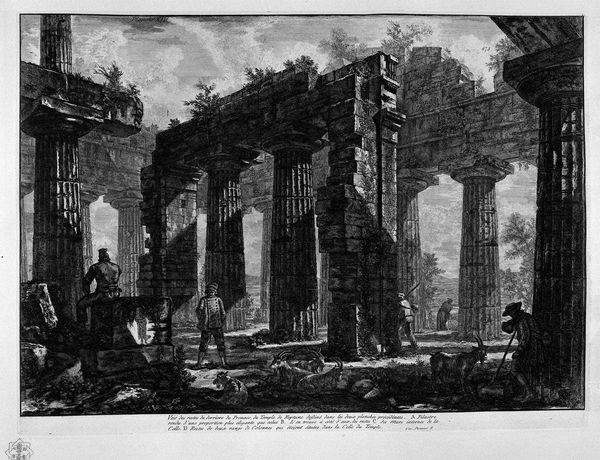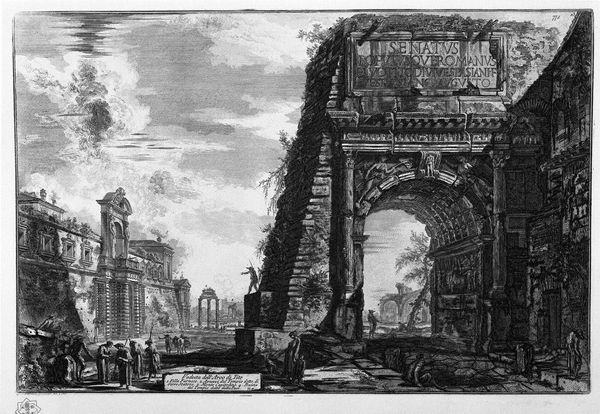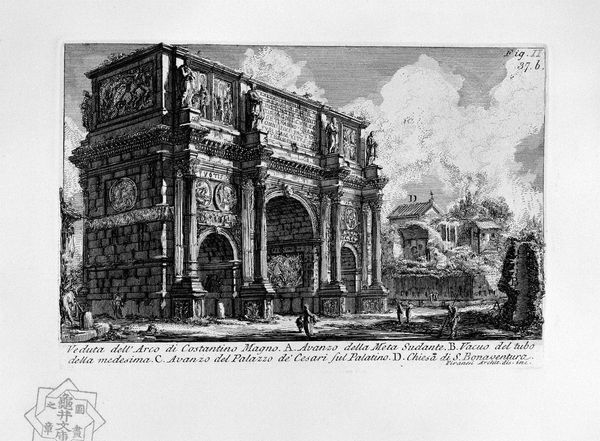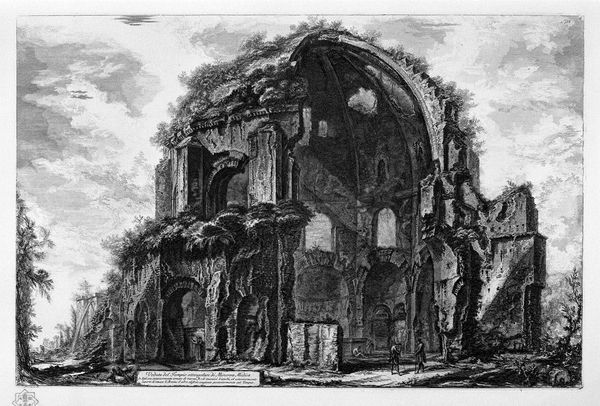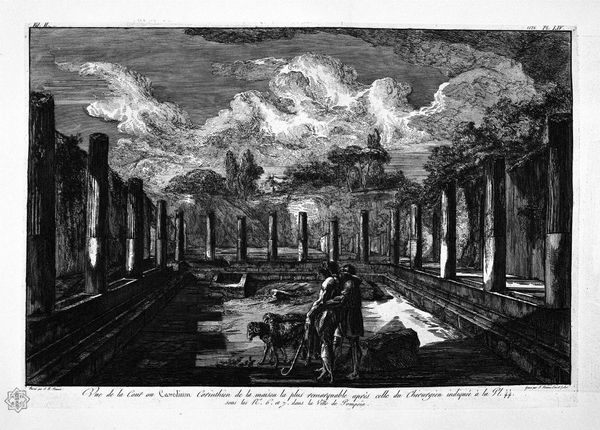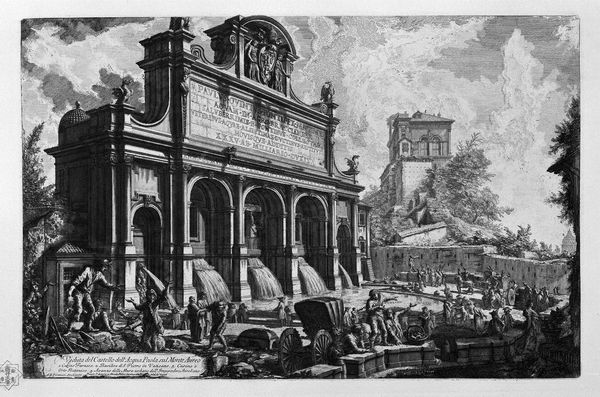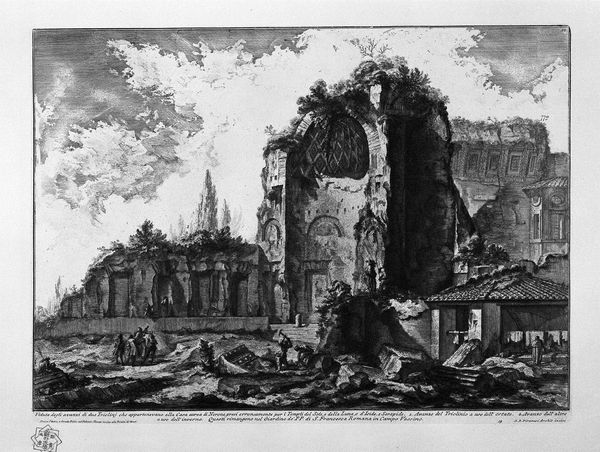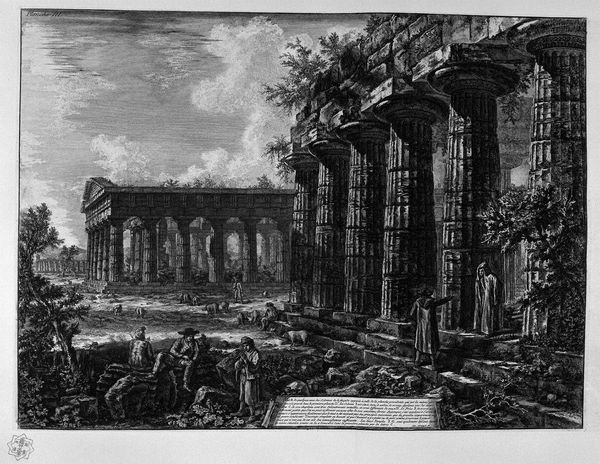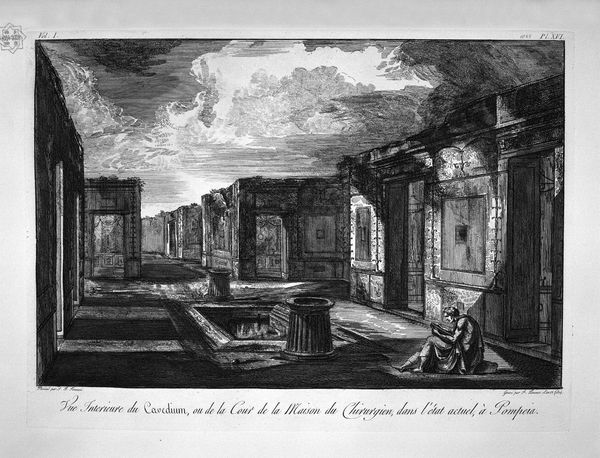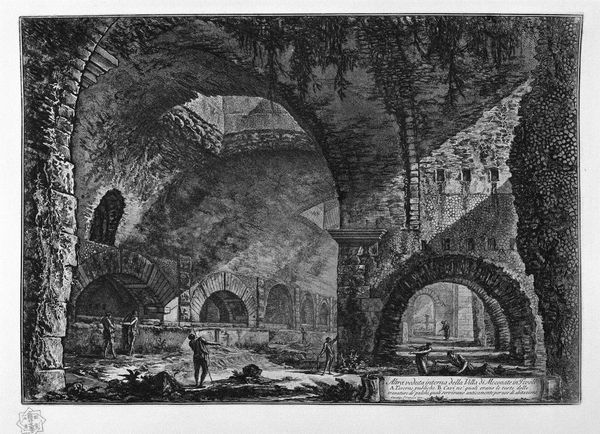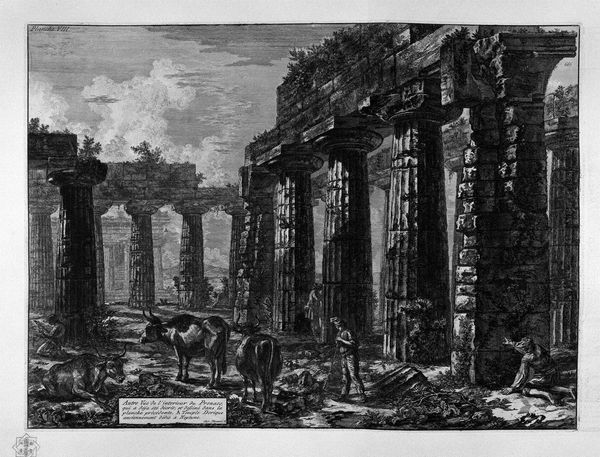
View of the Temple of Isis, which today exists among the remains of the ancient city of Pompeii, design of L Despres
0:00
0:00
print, engraving, architecture
# print
#
landscape
#
ancient-mediterranean
#
cityscape
#
engraving
#
architecture
Copyright: Public domain
Editor: This engraving, "View of the Temple of Isis… Pompeii", is attributed to Giovanni Battista Piranesi. I’m immediately struck by how this print romanticizes ancient ruins with the everyday life happening all around the fallen structures. It makes me think about the passage of time. What emotions or ideas does this provoke in you? Curator: Oh, absolutely! I see it as Piranesi inviting us into a kind of dreamscape, where past and present dance together in a bittersweet ballet. You have these meticulously rendered ruins – almost stubbornly magnificent in their decay – but look at the people populating the scene. They are shopping, talking… just going about their daily business, completely unfazed by the echoes of a lost civilization. Don't you think it's delightfully odd, that contrast? Editor: It really is! The more I look, the more those details pop. Like, that little dog trotting around – it's a wonderfully banal touch in such a grand setting. But I keep coming back to those stark contrasts. How can this single image make us feel so many different things? Curator: Well, I think Piranesi’s genius lies precisely in that juxtaposition. The ruins aren't just stones and columns; they're ghosts whispering stories of ambition and demise. And those people? They're us, trying to live our lives amidst the debris of history, maybe without even realizing what we're walking through. What do you think – are they ignorant, or wise in their seeming indifference? Editor: Maybe they’ve just learned to live with it… or maybe we're imposing our modern sensibilities onto their world. I suppose what I’m taking away from this is the reminder that time keeps moving, no matter what’s left behind. Curator: Beautifully put! It's as if Piranesi captured time itself – its ability to both crumble and create. Leaving us, centuries later, to still wander those same ruins in our minds.
Comments
No comments
Be the first to comment and join the conversation on the ultimate creative platform.
